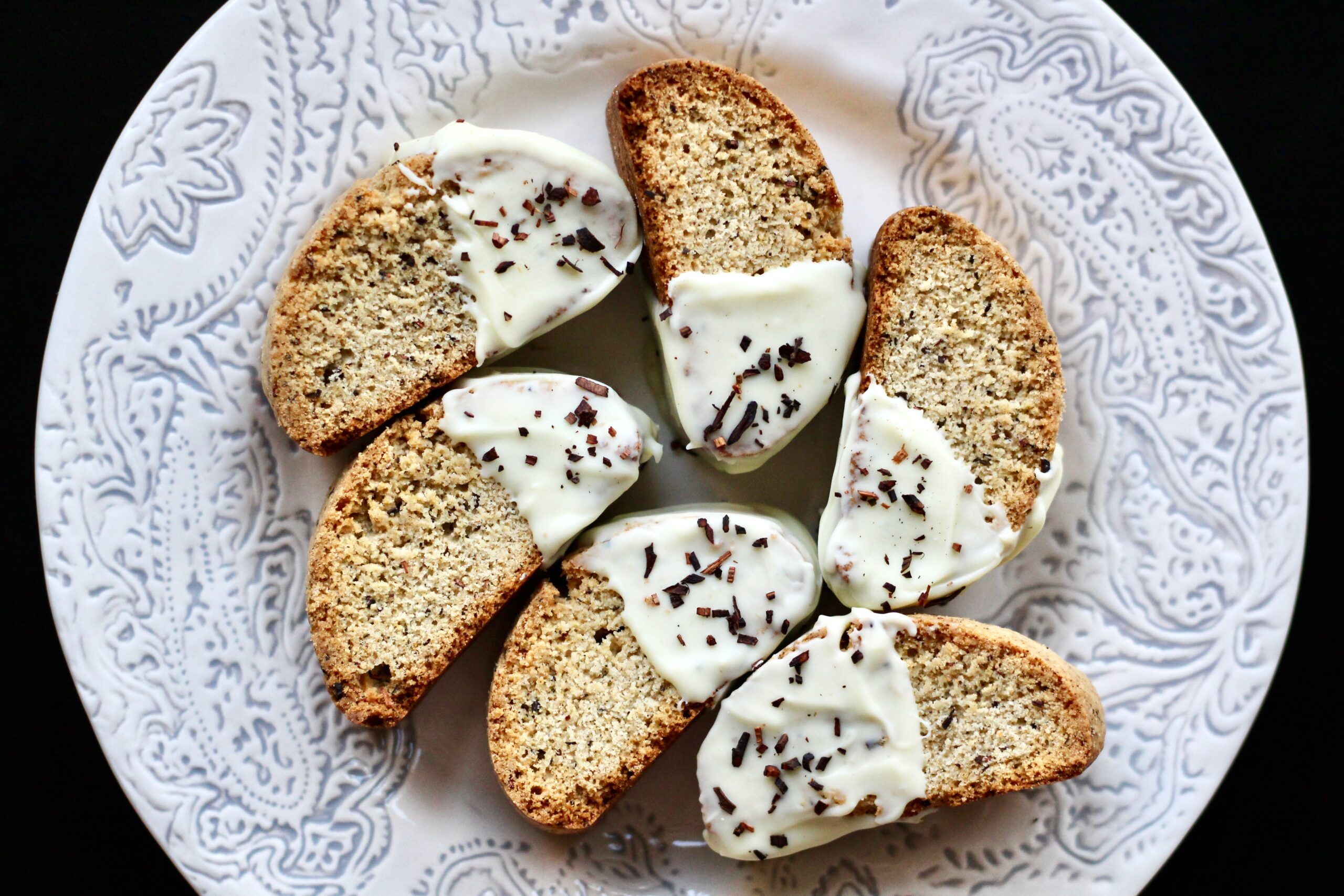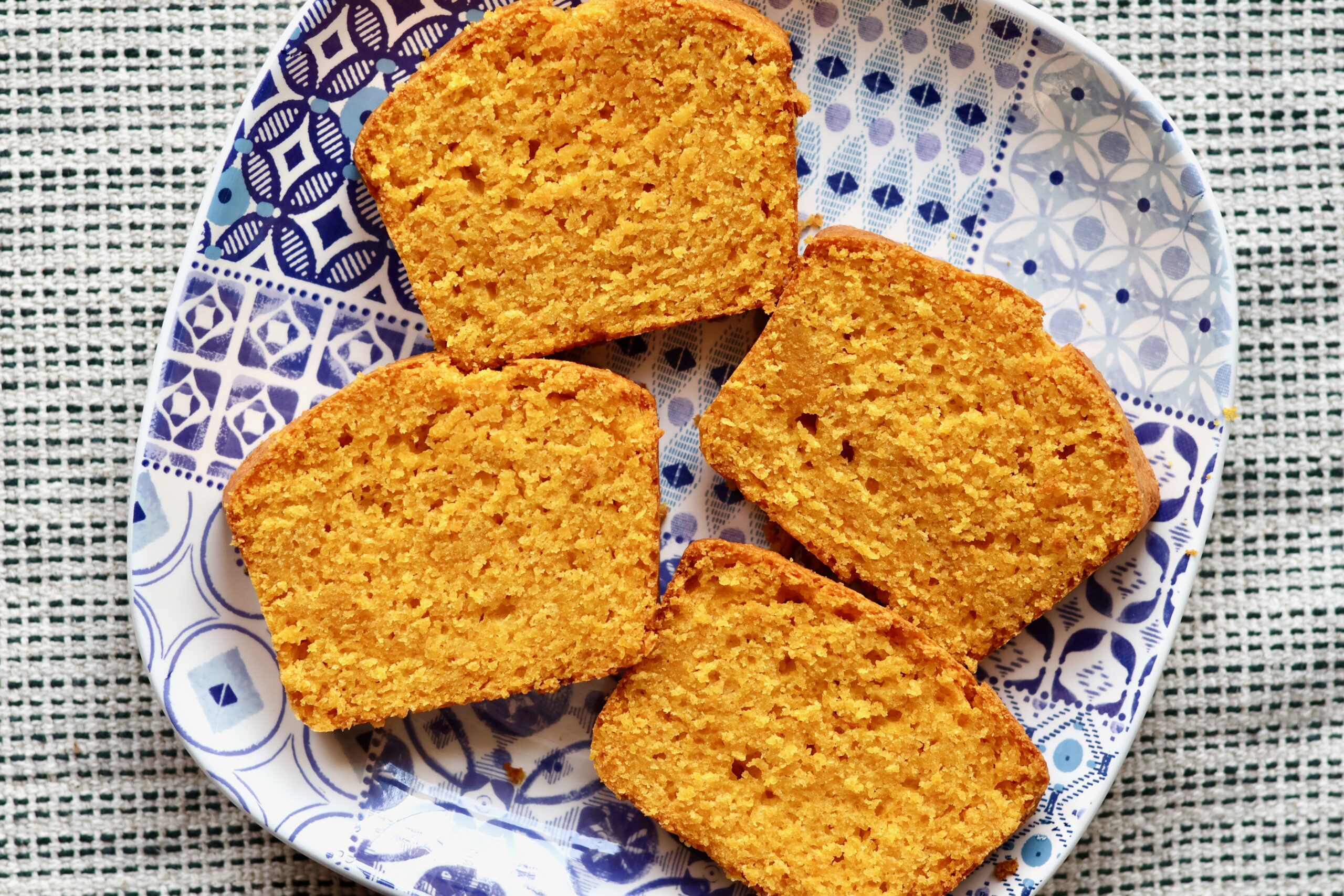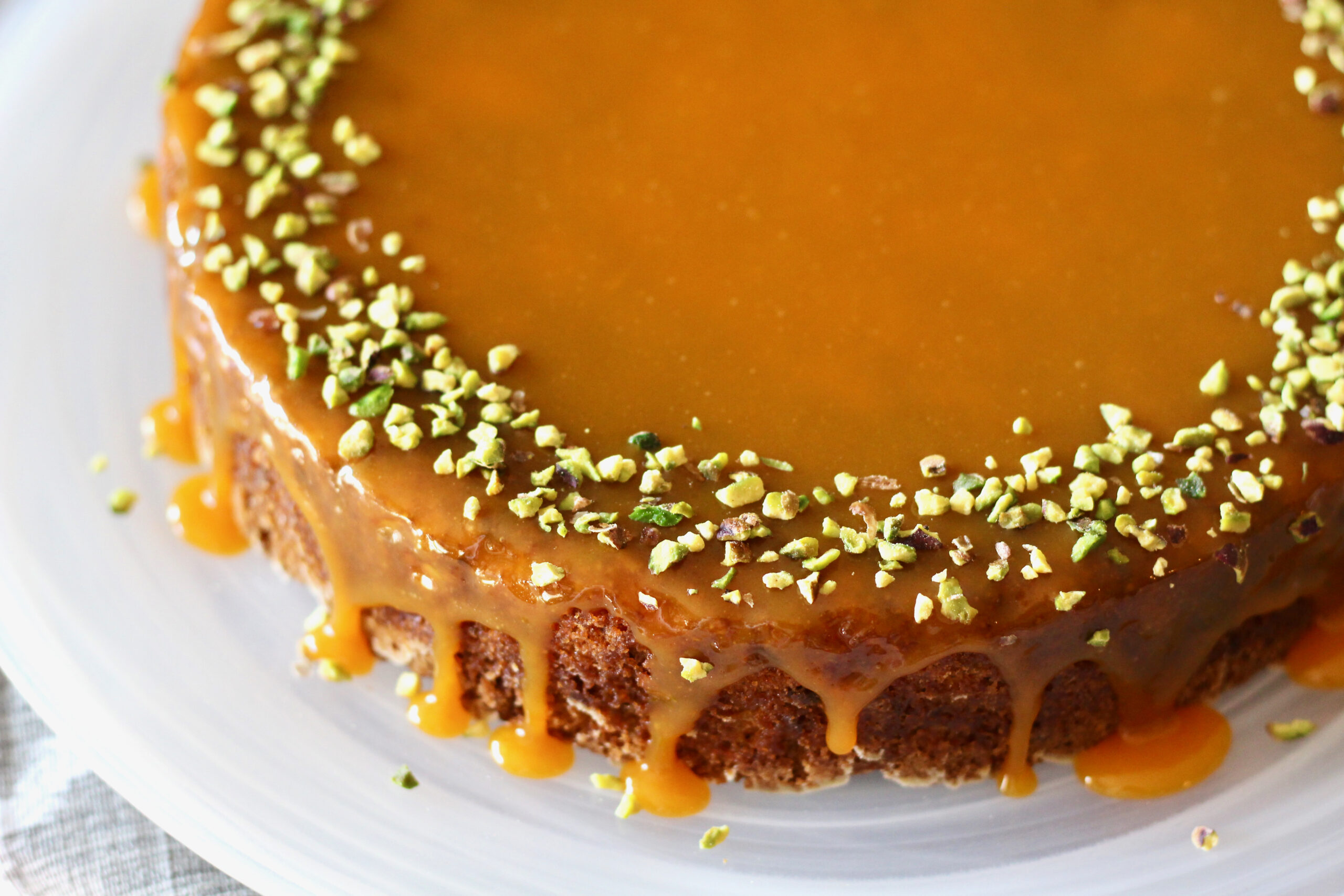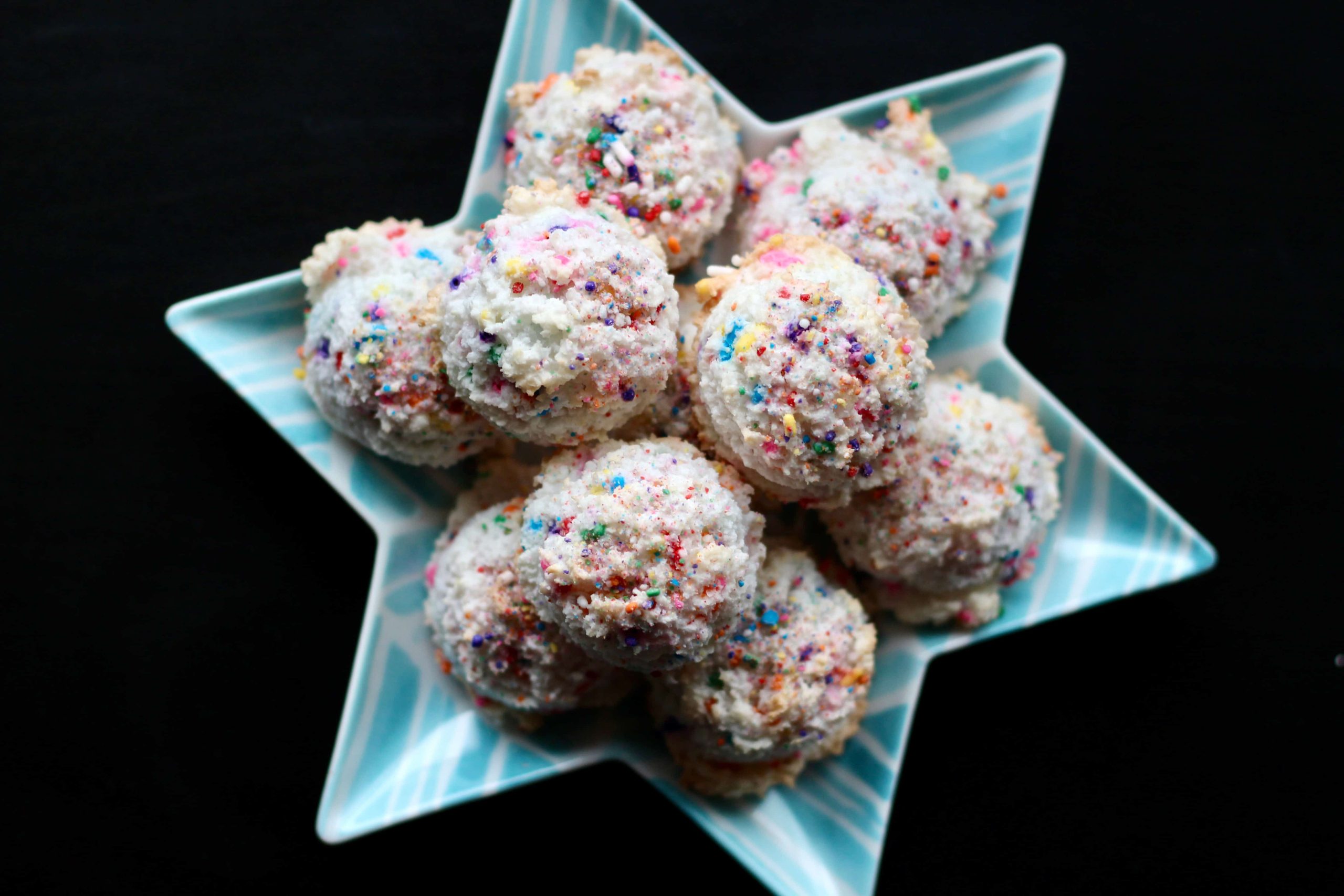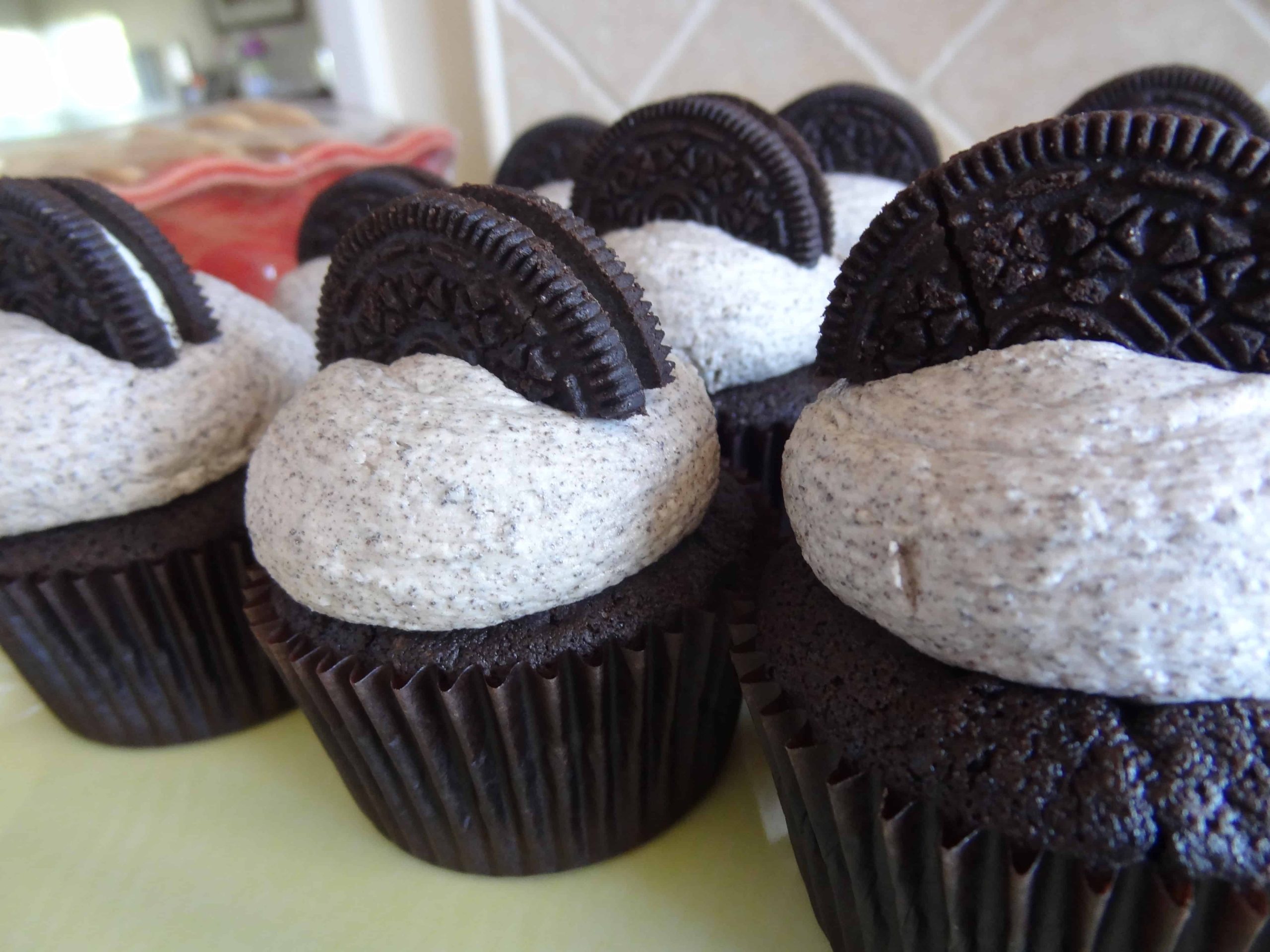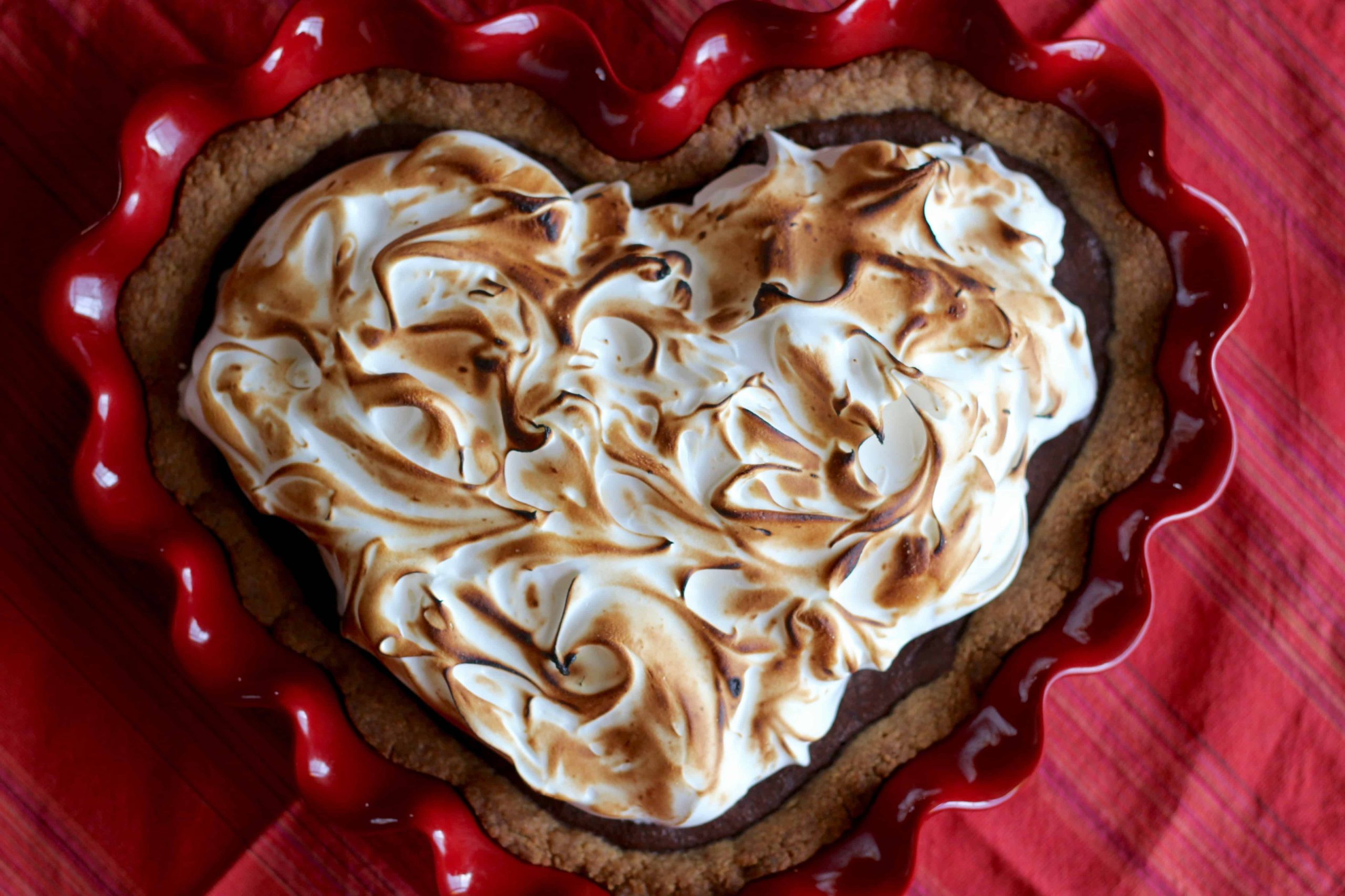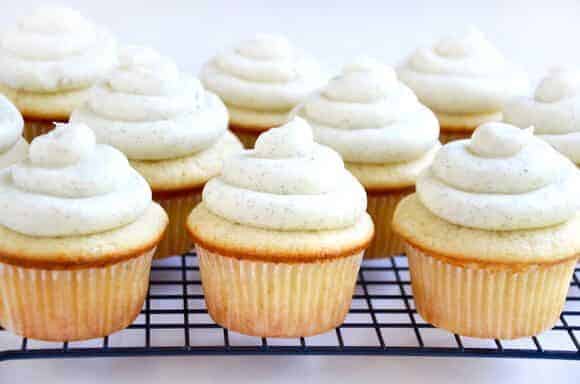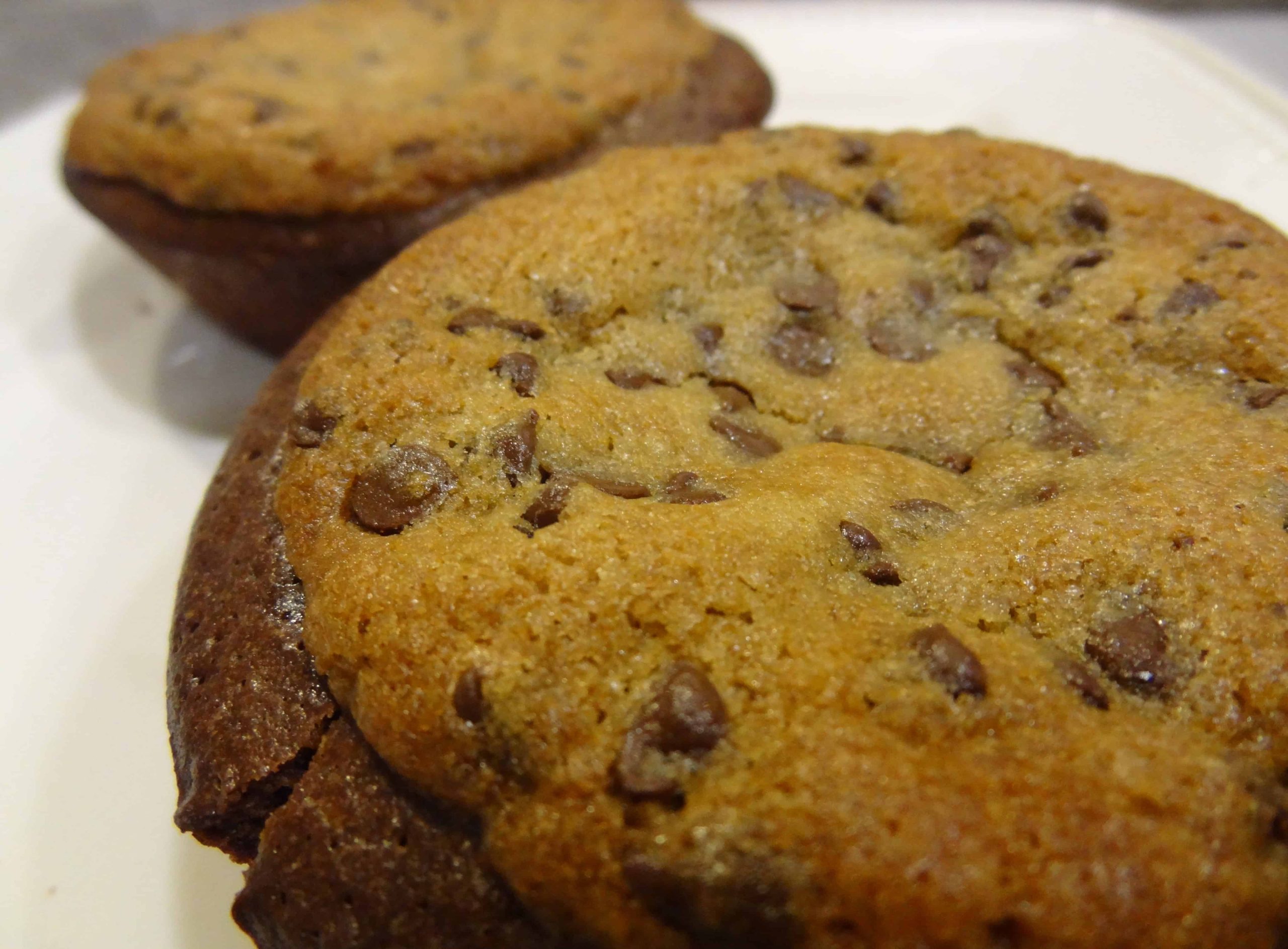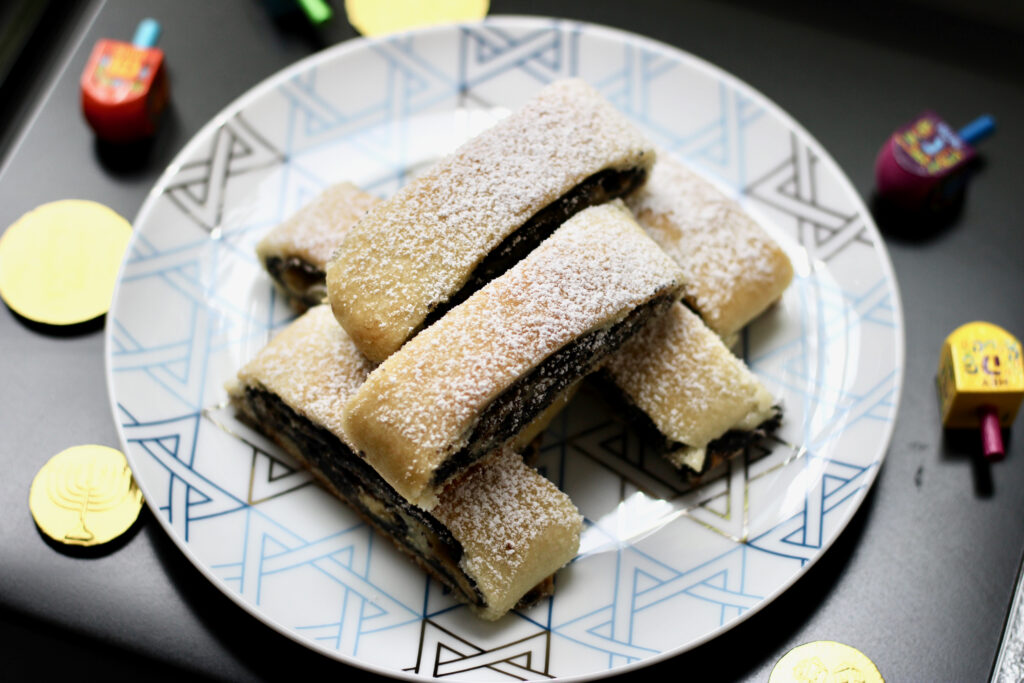
For Chanukah this year, I was mulling over what to bake, probably some kind of rugelach? Or maybe I’d try black-and-white cookies finally? But then Shannon Sarna’s Modern Jewish Comfort Food arrived, and all of that went right out the window because her beautiful new book includes a recipe for “Israeli Swirl Cookies” with two different fillings. What about them, you ask? This recipe stopped me in my tracks because I’ve waiting for it. I didn’t know what to call them, or if I’d ever come across them in a book; when I lived in Israel in a bygone era called 2018, I discovered a cookie that I’ve dreamed of recreating, and this is it. There’s a chain of cafés called Aroma Espresso Bar, which is much like the Israeli version of Starbucks, except WAY better. (They used to have a few outposts in New York City, but they are long closed now.) The food is fresh and colorful, and their pastries are baked on the premises. One of my greatest small joys was walking down the block to the Aroma near my apartment, especially on Fridays before the mini farmers’ market in the local plaza where I’d pick up some hamin for Shabbat, sometimes a couple of cheese pastries and a loaf of spelt sourdough at Shemo.
My favorite treat at Aroma was this particular cookie which they simply called a “halva pastry“, consisting of dough rolled up around a halva filling– so simple and yet it was such a joy to nibble on these. I’ve never seen or had them outside of Israel, and it was one of those things that I was hoping to make my own someday, but I’ve never seen a recipe and didn’t know what kind of dough would most closely replicate the Aroma version. Enter Shannon, with her pretty swirled cookies! Her filling choices in the book are chocolate-hazelnut spread, and dates and walnuts. I’m sure both are yummy in their own right, but I knew I would be tucking halva into mine, and then I thought of the Chocolate-Halva Babka that I made some years back, where I slathered the dough with a black cocoa chocolate spread and crumbled halva on top of it before rolling up the dough— basically the same thing I would be doing here. So that decision was made instantly.
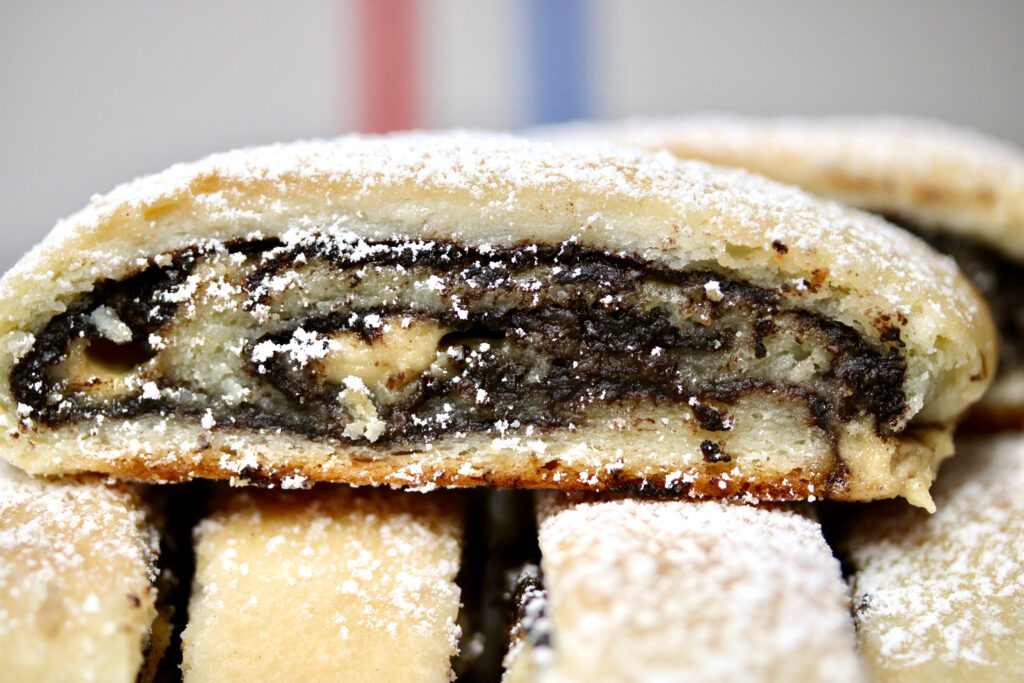

A few recipe notes:
- Shannon says that the dough only needs to be chilled for 20 minutes; I found that the dough is easier to work with, less sticky, and easier to roll up without tearing when it’s been chilled longer. The first time I made them, I left the dough in the fridge for about 2 hours while I was doing other things, while the second time I took the dough out after an hour because I was baking late at night and trying to hurry things along. While both batches were delicious and came out in the range of “successful”, I found that the firmer dough after 2 hours is my personal preference.
- Similarly, the first time I let the cocoa filling sit longer at room temperature after cooling, so it thickened and was easier to spread and roll up. However, it’s perfectly fine to use it as soon as it cools.
- The dough can be made either with a hand mixer or stand mixer. The first time I used a hand mixer to beat the butter, sugar, and sour cream, then switched to a spatula to fold in the flour so I wouldn’t have a huge flour cloud all over my kitchen. This required hand-kneading the dough to bring it together. The dough was stiffer and looked a bit less uniform. The second time, I used my KitchenAid, which was soooo much faster and easier, and resulted in a smoother, though softer, dough. Both turned out great, and I think the difference in handling (as mentioned in the first note above) was more about chilling time.
- I highly recommend using black cocoa here, but if you don’t have it or prefer regular cocoa, it’s perfectly fine to use a good-quality dark, Dutch-processed cocoa powder, such as Valrhona.
- While I adore the combination of black cocoa and halva, you could also swap toasted unsweetened coconut flakes for the halva. Or peanut butter. Or cookie butter. You get the idea.
These aren’t necessarily Chanukah cookies per se, but I’d argue with zero hesitation that these are pretty similar to a rugelach vibe, although each slice is twice as big, and I have no problem endorsing this sort of holiday cookie recklessness. Happy Chanukah, friends!
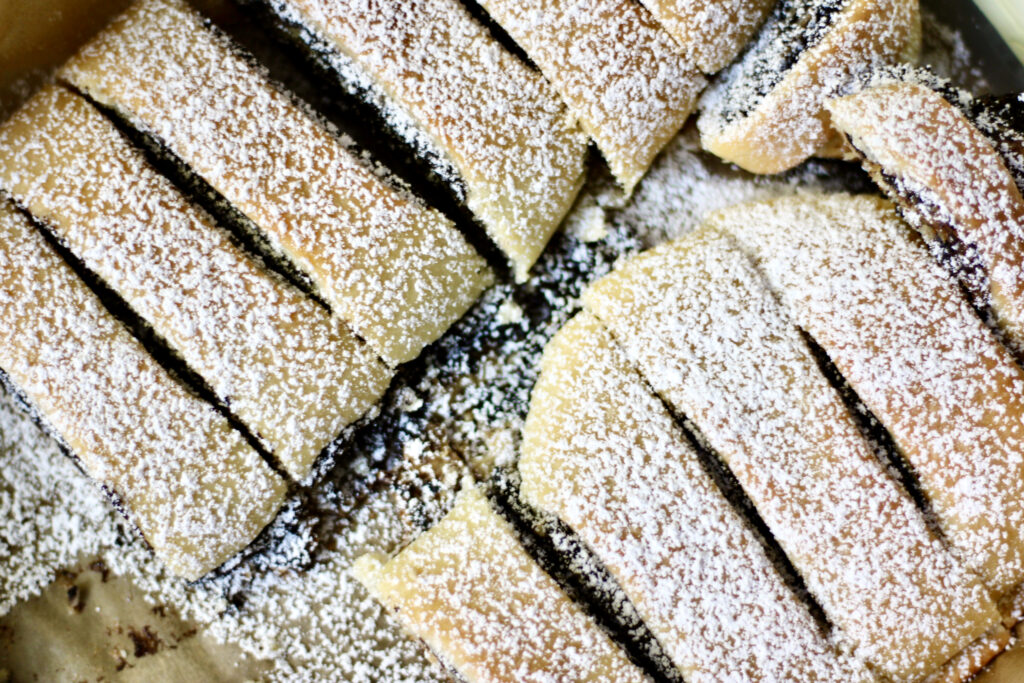

Black Cocoa Halva Israeli Swirl Cookies
Adapted from Modern Jewish Comfort Food by Shannon Sarna
Yields 20-24 servings
You can make the dough with a handheld mixer or a stand mixer; I tried both and by far prefer the stand mixer to avoid clouds of flour and kneading by hand when the dough gets too thick for the hand mixer beaters. That’s what is described below, though feel free to use a hand mixer if you wish.
For the dough:
- 3 cups (360g) unbleached all-purpose flour
- 2½ teaspoons baking powder
- ½ teaspoon kosher salt
- 14 tablespoons (1½ sticks + 2 tablespoons) unsalted butter, at room temperature
- ¼ cup (50g) sugar
- 1 cup (227g) full-fat sour cream
For the filling:
- ¾ cup (130 grams) good-quality dark chocolate, chopped
- ½ cup (1 stick/113g/8 tablespoons) unsalted butter
- Scant ½ cup (50 grams) powdered sugar
- ⅓ cup (30 grams) black or dark cocoa powder
- 10 ounces (280g) vanilla or plain halva, crumbled
For the garnish:
- Confectioners’ sugar, for dusting
Make the dough: Whisk the flour, baking powder, and salt in a medium mixing bowl.
In the bowl of a stand mixer fitted with the paddle attachment, beat together the butter and sugar on medium-low. Scrape in the sour cream and beat until combined; it’s okay if the mixture looks a bit curdled or chunky.
Add the dry ingredients to the mixer bowl and mix on the lowest speed just until the dough has come together into a cohesive mass. It will go through a shaggy phase; keep mixing past this point, but don’t overmix. Gently knead the dough a couple of times with your hands to bring it together into one large piece. It will be relatively soft (though not terribly sticky) and won’t look completely smooth.
Pat the dough into a thick disk and wrap it in plastic wrap, then transfer it to the fridge to chill for a minimum of 20 minutes, though I prefer about 2 hours, as the dough is easier to handle and less sticky.
Prepare the filling: While the dough is resting, melt the butter and chocolate together in a heatproof bowl set over a saucepan filled about ⅓ with simmering water. (The bowl should not touch the water.) Stir it occasionally until the mixture is smooth and fully melted. Meanwhile, sift the confectioner’s sugar and cocoa powder together in a medium bowl. When the chocolate is melted, pour it into the dry ingredients and stir with a rubber spatula until the mixture is fully blended with a consistency like thick pudding. Let it cool at room temperature for about an hour, or until slightly thickened, before spreading on the dough.

Assemble & bake the cookie rolls: Preheat an oven to 375°F and position a baking rack in the center. Line a rimless baking sheet with parchment paper.
Retrieve the dough from the fridge. Unwrap and divide it into two equal pieces (best to use a scale for accuracy). Place one piece on a lightly floured work surface and roll it into a rectangle about 8″ x 14″, with the long side facing you. If your dough has ragged edges (mine always does!), use a bench scraper or sharp knife to trim them and patch the dough into an even rectangle. It doesn’t need to be that precise because you’re rolling up the whole thing and any imperfect edges will be hidden.
Use an offset spatula to spread half of the black cocoa paste evenly across the dough, going all the way to the edges, except leave about a ½” uncovered border along the long side facing away from you. Scatter half of the crumbled halva evenly over the cocoa paste.
Starting from the long side close to you, nudge the edge of the dough up and over the edge of the filling, then start rolling up the dough tightly into a log with the seam on the bottom (pat it down to make vaguely square-like sides along the way, so it’s not perfectly rounded). Carefully transfer the dough roll to the prepared baking sheet. Repeat this process with the other piece of dough.
Using a sharp knife, cut shallow indentations spaced 1″ apart across the top of both logs. Do not cut all the way through to separate the cookies, as the filling will spill out during baking (I already did this so you don’t have to). You’ll cut the rolls all the way through into pieces after they are baked.
Bake for 25-30 minutes, rotating the pan halfway through baking, until the exterior dough is lightly golden; do not allow the cookie rolls to get darkly browned. Cover the cookie logs loosely with aluminum foil after about 20-25 minutes if they start to brown too much. (I have found that these are perfectly golden on the outside at 25 minutes, but underbaked in the middle, so I now leave them in for about 30 minutes with a piece of foil laying on top.)
Remove the pan from the oven and transfer it to a metal cooling rack. Allow the cookie rolls to cool for about 30-45 minutes. Dust the tops with confectioners’ sugar, then gently slice all the way through each slit to separate into individual cookies.
Store the swirl cookies in an airtight container at room temperature for up to four days.
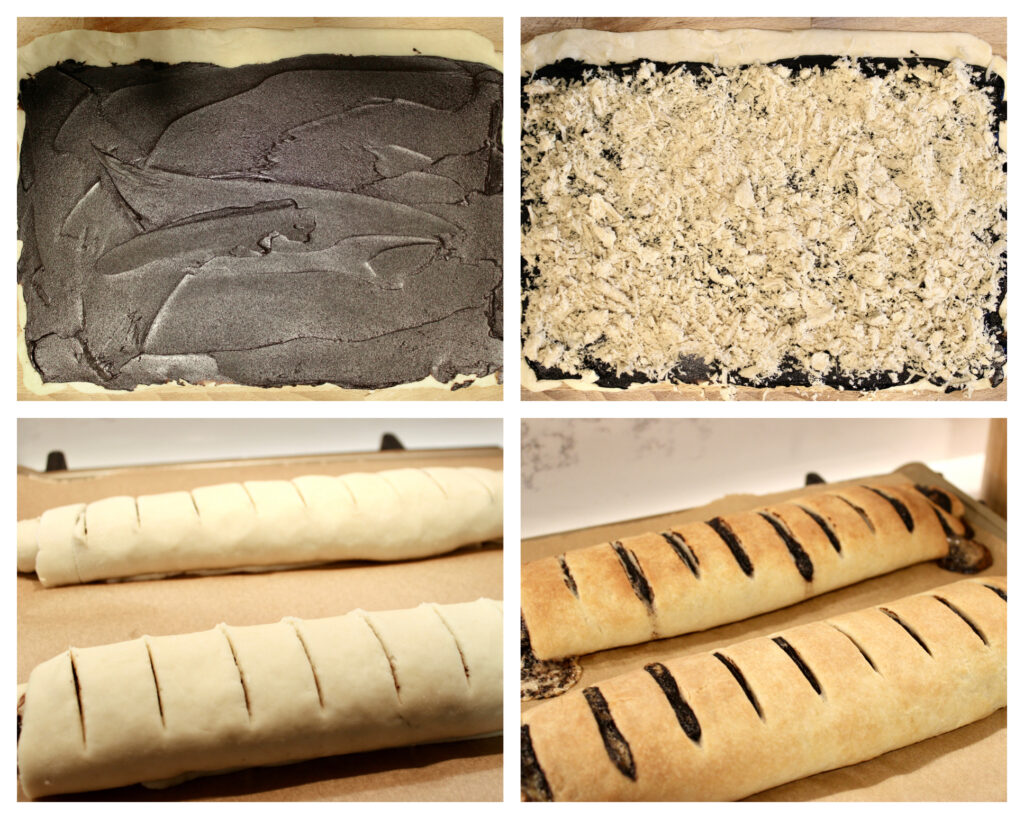


© Dafna Adler & Stellina Sweets, 2022.




